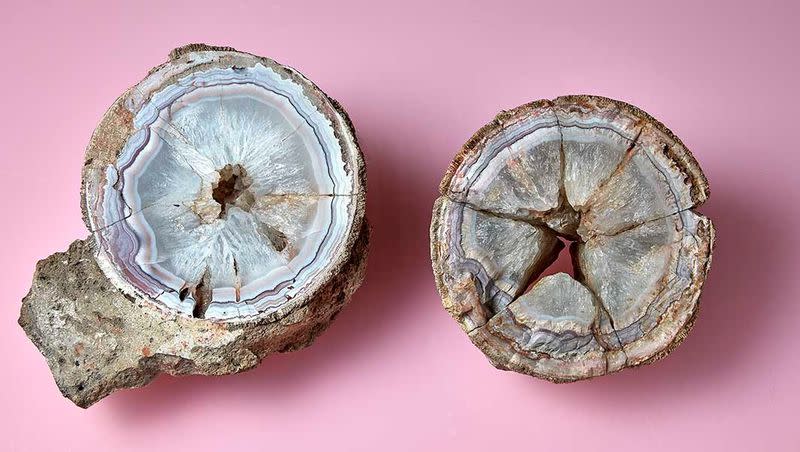The London Natural History Museum has identified a 60-million-year-old dinosaur egg

A small mineral “rock” that was found at least 180 years ago was recently discovered to be an egg from one of the largest dinosaurs.
Originally found in central India, in 1883 the piece of agate was later traded in London to The Natural History Museum. “The spherical mineral with a light pink and white interior spent over a century in the collection ‘assumed to have no other significance,’” per NewsBeezer.
In 2018, Robin Hansen, one of the museum’s mineral curators, put the agate out on display in the museum’s members’ room. Later that year, while visiting France for a mineral show, she realized the mineral might be more than what meets the eye.
According to the museum’s website, Hansen said, “While I was looking around the show, a dealer showed me an agatized dinosaur egg, which was spherical, had a thin rind, and dark agate in the middle. That was the lightbulb moment when I thought: ‘Hang on a minute, that looks a lot like the one we’ve just put on display in the museum!’”
Related
T. rex dinos probably looked more like Barney than a fierce monster
Bee noises could keep elephants away from African communities
Hansen took the agate to the museum’s dinosaur experts to do further research on the potential egg. What they discovered was the mineral was the right shape and size for a dinosaur egg. According to the dinosaur experts, the outer layer of the object had the likeness of a thin shell.
“This specimen is a perfect example of why museum collections are so important,” said Hansen. “It was identified and catalogued correctly as an agate in 1883 using the scientific knowledge available at the time.”
“It is only now that we have recognized that this specimen has something extra special — the agate has infilled this spherical structure, which turns out to be a dinosaur egg.”
The egg was originally found by Charles Frazer in India. While the year it was found is not known, he lived in India between 1817 and 1843.
Experts are almost certain that the egg is 60 million years old. The dinosaur that matched the egg was identified as the titanosaur, which was the largest dinosaur to roam the Earth.
“The size, shape and surface of the shell are consistent with titanosaur eggs, which were the most common dinosaurs living in present-day India at the time it was laid,” per USA Today.

